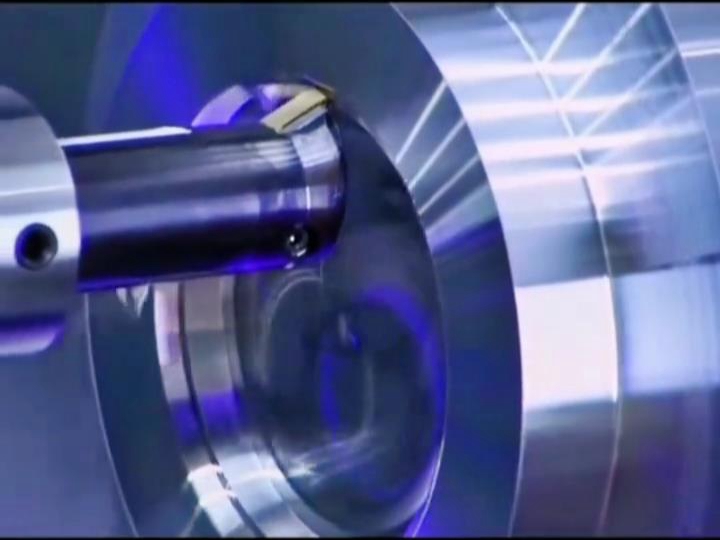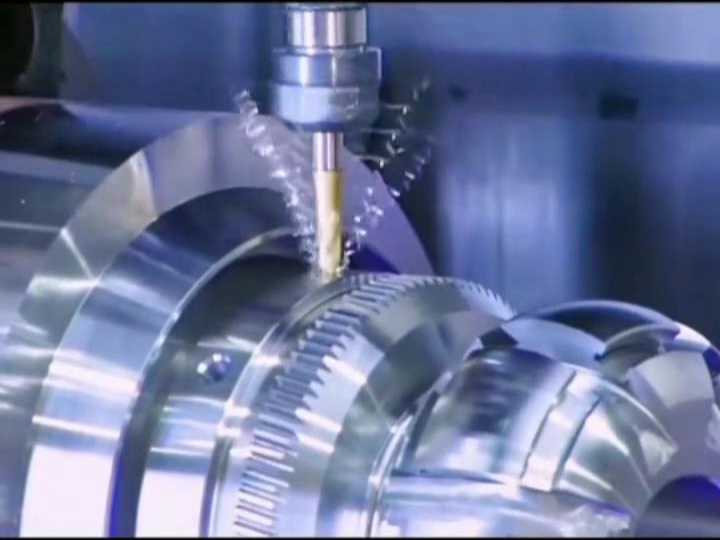- Rufen Sie uns an
86-0755-33182768 - Schicken Sie uns eine E-Mail
sales@precisionchina.com - Skype online
hawkwang_007
Die Vorteile der CNC-Bearbeitung gegenüber dem 3D-Druck
September 10, 2024
Im Laufe der Technologie, Es revolutioniert die Produktionsindustrie, insbesondere die Ingenieurwesen und die Maschinenstücke. Um der Anführer zu sein, Sie müssen die besten Geräte verwenden, um das Geschäft voranzubringen. Einige dieser Fortschritte im Herstellungsprozess sind Computer Numeric Control (CNC) Bearbeitung und 3D -Druck. Beide arbeiten mit unterschiedlichen Materialien, aber wie können wir die er bestimmen, die wir brauchen?
CNC -Bearbeitung und 3D -Druck haben jeweils ihre Stärken und Schwächen, je nach Anwendung einzigartige Vorteile bieten. Die Entscheidung zwischen den beiden hängt von Faktoren wie materieller Kompatibilität ab, Produktionsgeschwindigkeit, Präzision, kosten, und die Qualität des Endprodukts. Das Verständnis der wichtigsten Unterschiede zwischen CNC -Bearbeitung und 3D -Druck ist wichtig, um die beste Wahl für ein Herstellungsprojekt zu treffen.
Schlüsselunterschiede zwischen CNC -Bearbeitung und 3D -Druck
Während CNC -Bearbeitung und 3D -Drucken beide Herstellern ermöglichen, komplexe Teile herzustellen, Sie arbeiten nach verschiedenen Prinzipien. Die CNC -Bearbeitung ist ein subtraktiver Prozess, wobei Material aus einem festen Block entfernt wird, um einen Teil zu erstellen, Während der 3D -Druck ein Additivprozess ist, wobei das Material Schicht für Schicht abgelagert wird, um die gewünschte Form aufzubauen. Diese grundlegenden Unterschiede führen zu kontrastierenden Leistungsmerkmalen und Anwendungen.
1. Materialkompatibilität:

Die CNC -Bearbeitung ist sehr vielseitig und in der Lage, mit einer Vielzahl von Materialien zu arbeiten, einschließlich Metalle (Aluminium, Stahl, Titan), Kunststoffe, Holz, und Verbundwerkstoffe. Dies macht die CNC -Bearbeitung ideal für Branchen, die langlebig erfordern, hitzebeständig, oder strukturell robuste Materialien, wie Luft- und Raumfahrt, Automobil, und industrielle Fertigung.
.3D-Druck, auf der anderen Seite, ist in seiner materiellen Auswahl begrenzter. Obwohl neuere 3D -Drucker bestimmte Metalle und Keramik bewältigen können, Die meisten 3D -Drucke erfolgen mit Kunststoffen (wie ABS oder PLA), Harze, oder Nylon. Die mechanischen Eigenschaften dieser Materialien begrenzen häufig die Anwendung von 3D-gedruckten Teilen in anspruchsvollen Umgebungen.
2. Produktionsgeschwindigkeit und Volumen:

. Die CNC -Bearbeitung ist häufig die bevorzugte Wahl für die Massenproduktion aufgrund ihrer Geschwindigkeit. CNC -Maschinen können schnell große Mengen von Teilen mit minimaler Variation erzeugen, Sie ideal für die Herstellung von Hochvolumen ideal machen. In vielen Fällen, CNC -Maschinen können die Produktion eines Teils in wenigen Minuten abschließen.
.Im Gegensatz, 3D Druck kann langsam sein, Besonders beim Drucken großer oder komplizierter Teile. Da der 3D -Druck ein additiver Prozess ist, Die Maschine muss die Produktschicht für Schicht bauen, Dies kann Stunden oder sogar Tage dauern, abhängig von der Komplexität des Designs. Dies macht den 3D-Druck für die Produktion mit hoher Volumen weniger effizient, aber nützlich für die Erstellung von Custom, einmalige Designs oder Prototypen.
3. Präzision und Toleranz:

. CNC -Maschinen sind bekannt für ihre hohen Präzision und enge Toleranzen, Es ideal für Teile, die genaue Messungen und perfekte Anpassungen erfordern. Die subtraktive Natur der CNC -Bearbeitung ermöglicht extrem feine Details, mit Toleranzen von bis ± 0,005 Zoll oder besser.
. 3D-Druck, Während der Präzision verbessert, Im Allgemeinen können Sie nicht mit den engen Toleranzen der CNC -Bearbeitung übereinstimmen. Die Schicht-für-Schicht-Konstruktion des 3D-Drucks führt zu geringfügigen Abweichungen in den Abmessungen, Dies kann zu Teilen führen, die den Anforderungen an strenge Genauigkeit nicht entsprechen, insbesondere für ineinandergreifende oder bewegliche Komponenten.
4. Oberflächenveredlung:
. Teile, die durch CNC -Bearbeitung produziert werden, haben typischerweise einen glatten, Saubere Oberflächenbeschaffung, da der Vorgang das Schneiden und Formen eines festen Materials beinhaltet. CNC-Maschinen können Teile mit minimaler Nachbearbeitung und hervorragender Oberflächenqualität erzeugen, Sie für Produkte geeignet machen, bei denen Ästhetik wichtig ist, wie Unterhaltungselektronik oder medizinische Geräte.
. Dagegen, 3D-gedruckte Teile erfordern häufig zusätzliche Nachbearbeitung, um ein reibungsloses Finish zu erzielen. Die geschichtete Konstruktion kann zu sichtbaren Linien führen, raue Oberflächen, oder kleine Mängel, das muss möglicherweise geschliffen oder poliert werden. Dieser zusätzliche Schritt erhöht die Zeit und die Produktionskosten.

Die Vorteile der CNC -Bearbeitung gegenüber dem 3D -Druck
Beim Vergleich der CNC -Bearbeitung und des 3D -Drucks, Es ist klar, dass die CNC -Bearbeitung mehrere Vorteile hat, Besonders für die Produktion mit hoher Volumen, langlebige Materialien, und Anwendungen, bei denen Präzision und strukturelle Integrität von größter Bedeutung sind. Während der 3D-Druck gut geeignet ist, um kundenspezifische Designs zu prototypieren und mit niedrigem Volumen, Die CNC-Bearbeitung bleibt die Lösung für viele Branchen, die Effizienz suchen, Stärke, und Kosteneffizienz.
1. Prototyping ist bei der CNC -Bearbeitung einfacher

Prototyping ist ein entscheidender Schritt in der Produktentwicklung, Da es den Herstellern ermöglicht, Entwürfe zu testen, bevor sie sich für eine vollständige Produktion verpflichten. Die CNC -Bearbeitung wird häufig für das Prototyping bevorzugt, da sie Prototypen aus denselben Materialien produzieren kann, die im Endprodukt verwendet werden. Dies gibt den Herstellern eine klare Vorstellung davon, wie sich das Endprodukt abwickeln wird, Besonders in Bezug auf die Stärke, Haltbarkeit, und strukturelle Integrität.
Mit CNC-Bearbeitung, Genaue Tests, und Designänderungen sind möglich, da die Prototypen dem Endprodukt stark ähneln. Da arbeiten CNC -Maschinen mit einer Vielzahl von Materialien, Hersteller können leicht zwischen verschiedenen Materialien wechseln, um verschiedene Aspekte des Designs zu testen. 3D-Druck, im Gegensatz, Verwendet oft verschiedene Materialien für Prototypen, Es wird schwieriger, vorherzusagen, wie sich das Endprodukt unter realen Bedingungen verhalten wird.
2. Verbessert die Integrität des Prototyps

Einer der wichtigsten Nachteile des 3D -Drucks ist, dass er während des Herstellungsprozesses Wärme anwendet, Dies kann die strukturelle Integrität des Materials schwächen. Im Gegensatz, Die CNC -Bearbeitung wärme während der Produktion keine Wärme auf das Material, Erlauben, seine ursprüngliche Stärke aufrechtzuerhalten. Dies führt zu Teilen, die stärker und langlebiger sind als diejenigen, die durch 3D -Druck erzeugt werden.
CNC -Maschinen können auch Prototypen mit größerer Präzision und Genauigkeit produzieren, Welches ist für Branchen wie Automobile unerlässlich, Luft- und Raumfahrt, und Militär, Wo die Produktintegrität kritisch ist.
3. Oberflächenveredlung

Ein wesentlicher Vorteil der CNC -Bearbeitung ist das überlegene Oberflächenfinish der Produkte, die es erzeugt. Weil CNC -Maschinen Teile aus festen Materialien schnitzen, Sie erzeugen glatte Oberflächen mit minimalen Mängel. In Anwendungen, in denen die Ästhetik wichtig ist-wie Konsumgüterprodukte oder High-End-Elektronik-ist die CNC-Bearbeitung die bevorzugte Wahl.
Im Gegensatz, 3D Druck verlässt häufig sichtbare Schichtlinien oder raue Oberflächen, Dies erfordert möglicherweise zusätzliche Nachbearbeitung, um ein reibungsloses Finish zu erzielen. Dieser zusätzliche Schritt verleiht dem Produktionsprozess Zeit und Kosten, 3D-Drucken für hochwertige Oberflächenbeschwerden weniger effizient machen.
4. Höherer Toleranzniveau

Wenn es um Präzision geht, Die CNC -Bearbeitung bietet höhere Toleranzen als 3D -Druck. Dies bedeutet, dass CNC -Maschinen Teile mit minimaler Abweichung vom ursprünglichen Design produzieren können, Stellen Sie sicher. In Branchen, in denen Präzision von entscheidender Bedeutung ist, wie medizinische Geräte, Luft- und Raumfahrt, oder Robotik, Die Fähigkeit der CNC-Bearbeitung, Hochtoleranzteile zu liefern.
3D-Druck, auf der anderen Seite, ist anfällig für leichte dimensionale Ungenauigkeiten aufgrund seines additiven Prozesses. Dies kann zu Teilen führen, die nicht wie beabsichtigt zusammenpassen oder nach dem Druck zusätzliche Anpassungen erfordern.
5. Volumen und Preis

Die CNC-Bearbeitung ist kostengünstiger als 3D-Druck für die Produktion mit großer Volumen. In der CNC-Bearbeitung, Die Kosten pro Teil sinken mit zunehmendem Produktionsvolumen, Es ideal für die Massenproduktion. Dies ist besonders wichtig für Branchen wie Automobile oder Elektronik, wo große Mengen von Teilen zu niedrigen Kosten benötigt werden.
Im Gegensatz, 3D Druck ist oft teurer für die großflächige Produktion, da die Materialkosten und die Zeit, die erforderlich ist, um jeden Teil mit dem Volumen zu produzieren, erforderlich ist. 3D-Druck eignet sich besser für kleine oder benutzerdefinierte Produktion, wo die Fähigkeit, einzigartig zu schaffen, einmalige Designs überwiegt die Kosten.
6. Abschluss

Abschließend, Während sowohl die CNC -Bearbeitung als auch der 3D -Druck die Fertigungsindustrie revolutioniert haben, Die CNC-Bearbeitung bietet mehrere unterschiedliche Vorteile für die groß angelegte Produktion, Materialstärke, Präzision, und Kosteneffizienz. Für Hersteller, die qualitativ hochwertig produzieren müssen, langlebige Teile mit engen Toleranzen, CNC-Bearbeitung ist die bessere Wahl. Auf der anderen Seite, 3D-Druck zeichnet sich durch individuelle Anpassung aus, Prototyp entwickeln, und Nischenanwendungen, Aufgrund seiner begrenzten Materialstärke und Produktionsgeschwindigkeit ist es jedoch weniger für die Massenfertigung geeignet.
Bei der Wahl zwischen CNC-Bearbeitung und 3D-Druck, Es ist wichtig, die spezifischen Anforderungen des Projekts zu berücksichtigen, inklusive Materialbedarf, Produktionsvolumen, und Budget. Für die meisten großtechnischen Fertigungsanwendungen, Die CNC-Bearbeitung bietet eine effizientere Lösung, zuverlässig, und kostengünstige Lösung.





